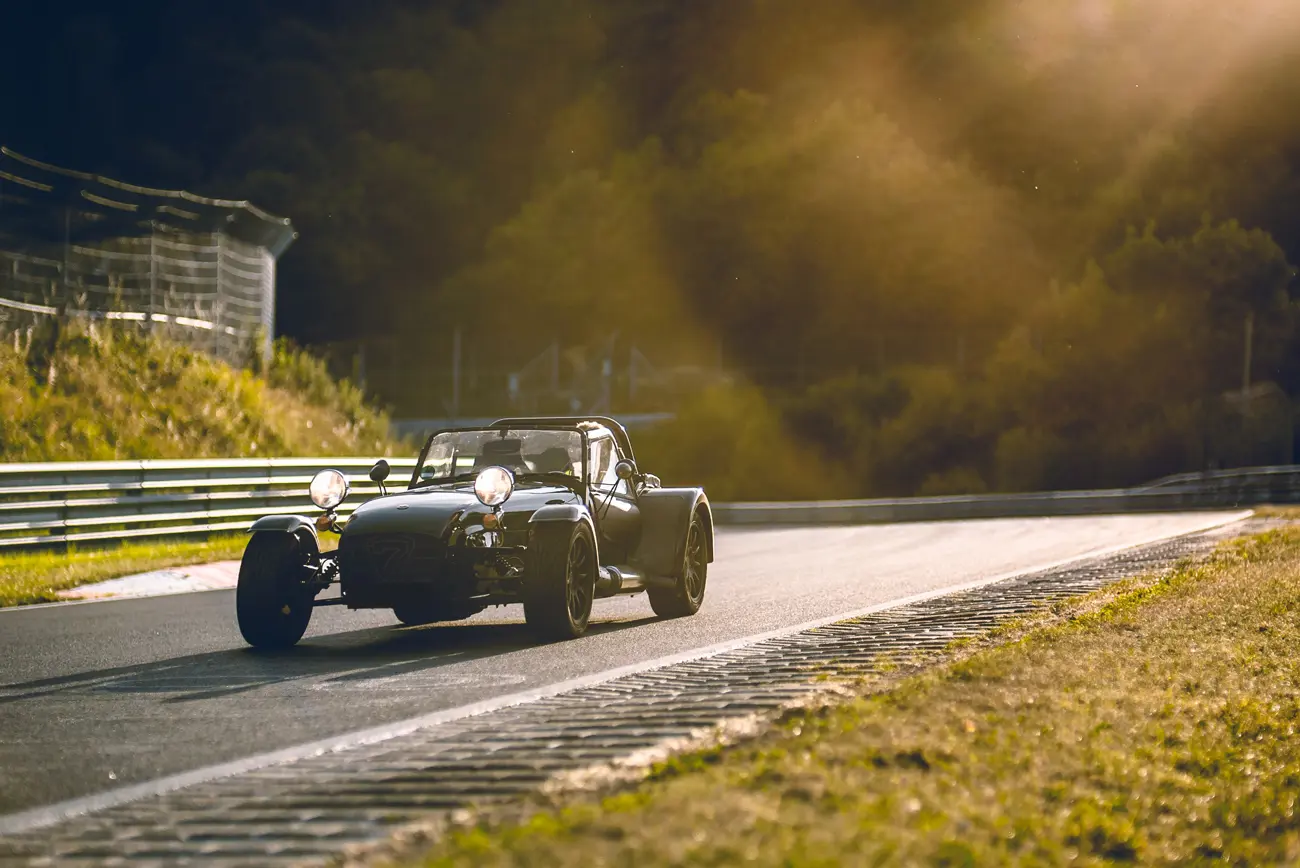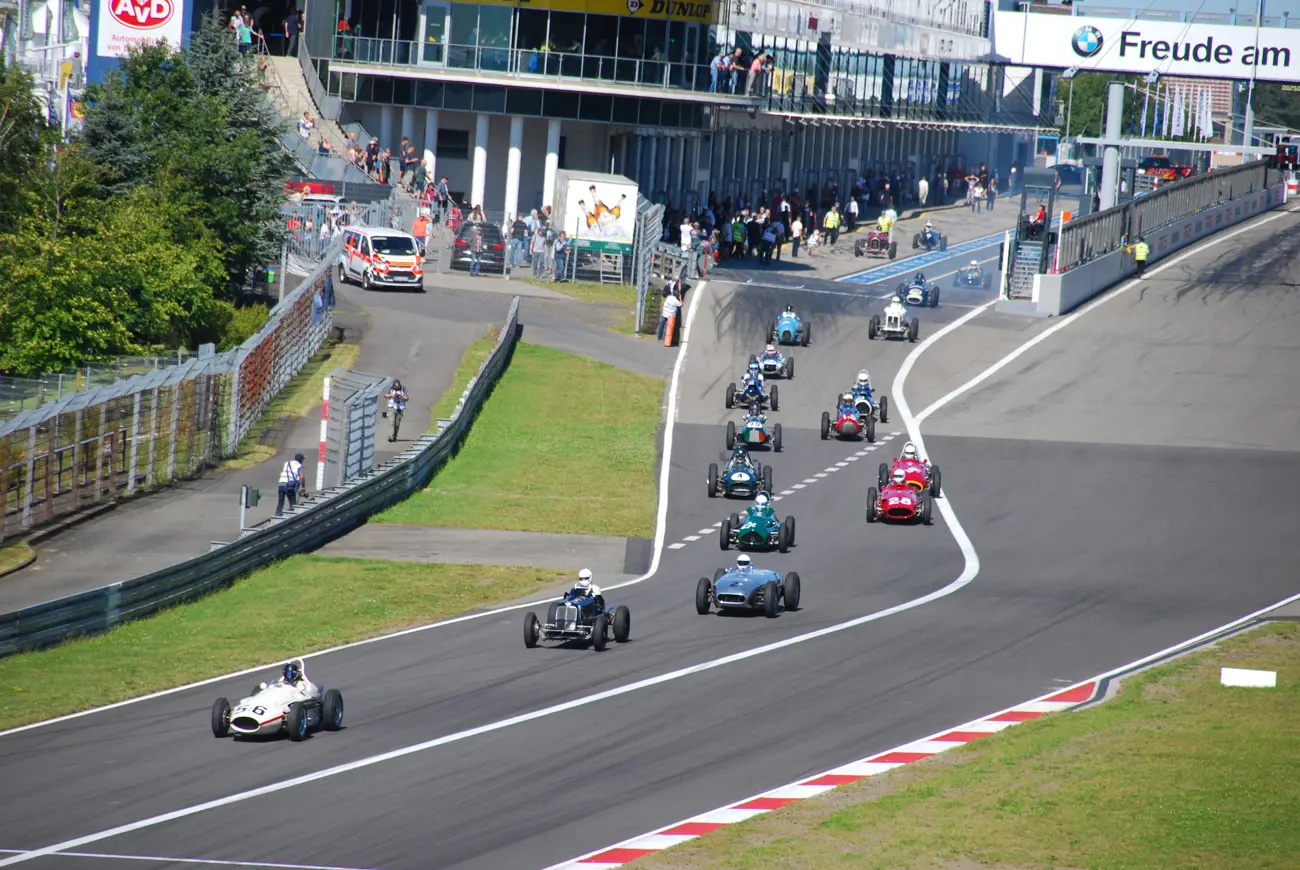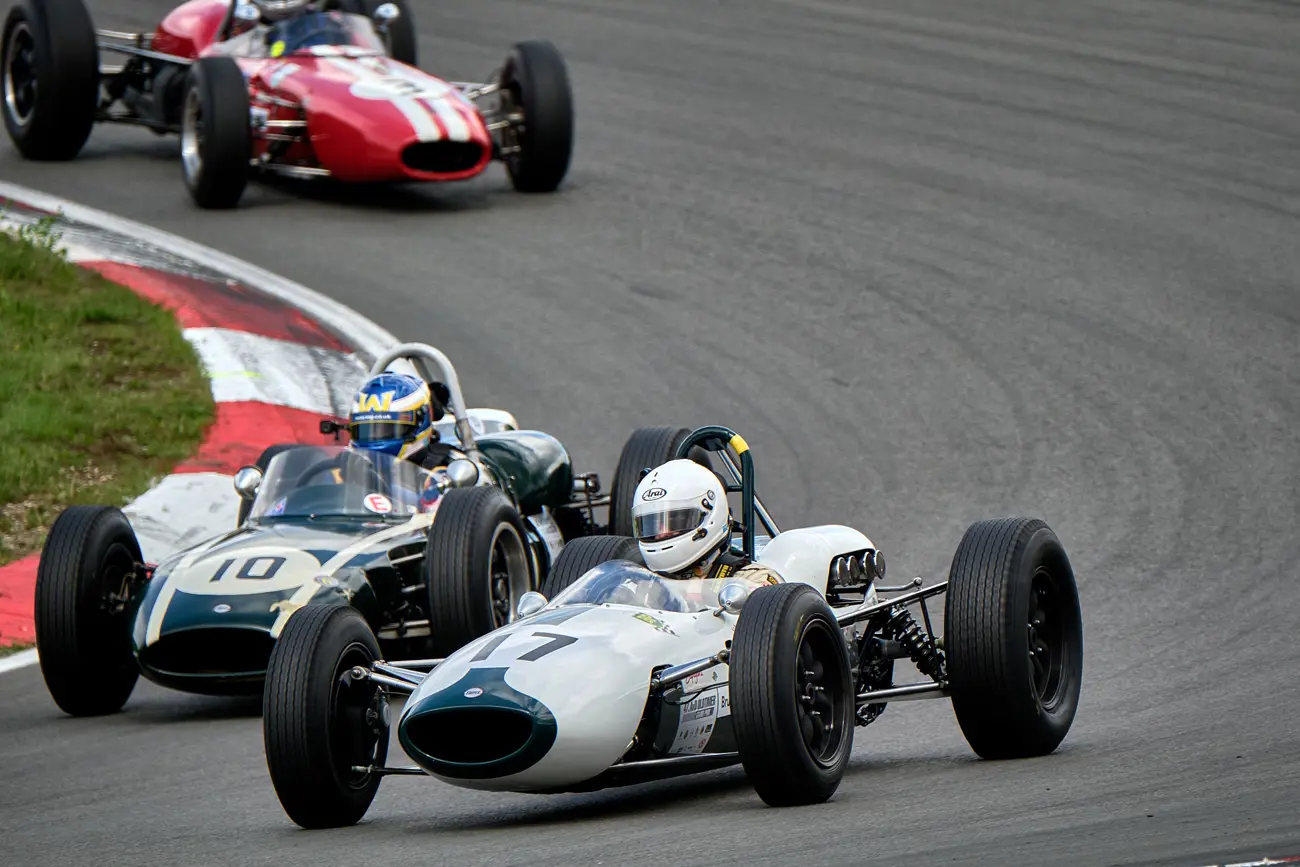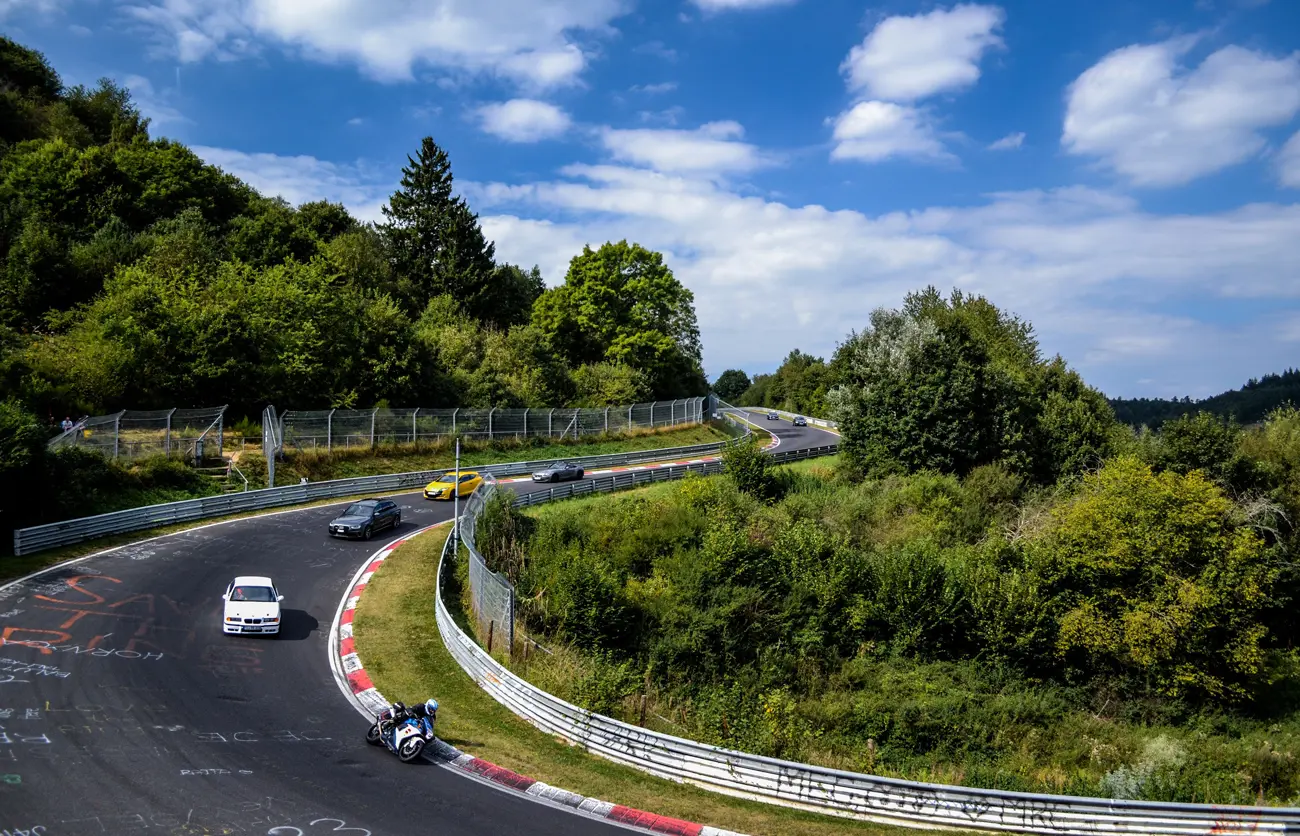All about the Nürburgring
21 April 2021

The Nürburgring is a bucket-list destination for just about every petrolhead on the planet. It attracts some two million visitors each year and is, without doubt, one of the premier automotive attractions in the world.
However, careful planning is required to ensure that you get the most out of any trip to the Nürburgring and you make the kind of memories that you want to make. The more you know about this iconic place, the greater any visiting experience will likely prove to be.
It’s important to note that the track poses quite a few risks. It often needs to be closed for clean-up, repair, and medical intervention, and has tragically taken many lives over the years.
So, whether you’re visiting with plans to drive the circuit or just as a spectator, you need to be armed with all the facts to ensure you come away with no regrets.
You also need to make sure you have adequate classic car insurance in place if you’re planning to drive the distance to Nürburg, west Germany in your vintage motor.
As with any long-distance trip, all sorts could go wrong – so get the cover you need from the specialists at Lancaster before you set off.
More on classic car cover from us later, but let’s first arm you with all the facts about the Nürburgring.
Travelling to the Nürburgring
Situated in the western side of Germany, close to the border with Belgium, Luxembourg and the Netherlands, the Nürburgring is around five hours’ drive from Calais. But there is plenty of opportunity for a few stop-offs along the way to make the drive that bit more enjoyable.
Driving to Nürburgring makes a lot of sense as the area isn’t particularly well serviced by public transport. If all you want to do is get to the ring in the quickest possible time, once you get to Calais, take the E40 along the coast, through Dunkirk, before heading to Brussels and into Germany.
But if you want to take in more of Belgium, come off the E40 and hop on the E314 which will take you via Leuven and Genk before heading off to your final destination.
You can make the trip anything you want it to be. Why not drive on some of the best roads in Europe, such as the Schwarzwaldhochstraße, or take a road trip through France on your way into Germany?
If this is your trip of a lifetime, make sure you do it right!
Fun fact: Located in the Eifel region, the racetrack sits amongst an incredibly dense forest, and it can be almost impossible to predict the weather there.
At one part of the track, it can be sunny and calm, while at the opposite end it can be windy and raining. So, if you’re a spectator, make sure you pack for all types of weather and be aware of the conditions if you’re planning to take on the track.

The track itself
Often, we talk about the Nürburgring as just one track, but it’s technically three tracks. First is the Grand Prix circuit (GP-Strecke), which is used for Formula 1 and DTM races amongst others.
It’s always popular with drivers. Lewis Hamilton, who won the 2020 Eifel Grand Prix at the track, said “it’s a fantastic circuit, one of the classics and it hasn’t lost that feel of an old classic circuit." However, the track’s reputation hasn’t always been a good one.
In fact, the GP-Strecke circuit was originally built because the original 'Nordschleife' (the North Loop) track was deemed too dangerous for Formula use.
Completed in 1984, the GP circuit was built to the highest safety standards including Formula 1 grade safety barriers and pedestrian protection. In 2001, the track was extended, bringing it to 5.148km in length.
Nordschleife is the track we all know and love. Having opened to the public in 1927, anybody with a road-legal vehicle is able to just turn up and drive the 12.9-mile track, providing there are no races taking place.
However, the track is often closed for some of the winter if the weather conditions have made it too dangerous to drive or if maintenance work needs to be carried out.
Nordschleife is separate from the Grand Prix circuit, but on certain days, the two tracks are combined – you never know your luck!
Dubbed ‘Green Hell’ (or Grüne Hölle) by three-time Formula 1 world champion Sir Jackie Stewart – for reasons which become apparent when you drive the circuit – Nordschleife has all manner of complex corners, elevation changes and blind crests which mean you’ve forever got your heart in your mouth. It’s one hell of an adrenaline rush.
If you’re a numbers person, here are some figures that you might find interesting:
- Cost to build: 15 million Reichsmark
- Number of construction workers: roughly 3,000
- Number of turns: 73 turns (33 left and 40 right)
- Maximum gradient: 17%
- Highest point: 616m above sea level
- Lowest point: 320m above sea level
The third track, which is often forgotten, is Sudschleife (the South Loop). However, much of the 4.8-mile Sudschleife was destroyed to make way for the GP circuit – although a small section still exists and can be walked by foot.
When visiting the circuit, it’s well worth your time searching out Sudschleife. Here’s what one visitor reported having done just that: “I found a magical serene place where dark trees around the track whispered of untold stories. The silence was the same as if a race had ended only a few hours ago.”
This track was a good deal more dangerous than the North Loop, largely because of the trees surrounding it, and it claimed a number of drivers’ lives over the years it was active.
It’s not too hard to find, just head in the direction of Barweiler past the old pits and new buildings. With GP-Strecke on your right-hand side, turn to Scharferkopf on the left. The South Loop is near the area where the Grand Prix track crosses the road.

Driving the Nürburgring
As you’ll be aware of by now, there are opportunities to drive both the Grand Prix track and the North Loop.
However, you should consult the track’s official website to see when the tourist sessions (‘touristenfahrten’) are open.
The North Loop is more readily available for public use than the Grand Prix track. That’s because the track is open to hire to car manufacturers, track day organisers or anybody else with deeper pockets than yours. So, don’t be too disappointed if you turn up only to find that the Grand Prix track has been booked out.
Depending on when you make your visit to the Nürburgring, you could end up sharing the track with up to 10,000 other cars during a tourist session. It can be fairly stop-start, too, with the track sometimes requiring a clean-up due to crashes and spillages.
It’s not particularly cheap to drive the Nürburgring. For a lap on the North Loop, you’re looking at around €30 – and who only wants to drive a single lap? If you plan on being a regular to the Nürburgring, you can buy an annual pass for around €1,900 which allows you to drive as many laps as you like.
Quick tip: make sure you enter the track at ‘Antoniusbuche’, which is halfway down the main straight and the main starting/exit point. The other entry point is at ‘Adenau’, halfway around the track, but starting your lap here will still require you to exit at Antoniusbuche.
If you want to compete with fewer cars for track space, search for private track days. This will give you an open run of the track – including the entire front straight, which is out of bounds during the tourist sessions – but be aware that these days don’t come cheap.
Track Days can be arranged by booking online through the official Nürburgring website. You can reserve a half or full day on either the full Nordschleife course or the shorter Grand Prix circuit.
Pulling out onto the track for the first time is an overwhelming experience. Not only are you having to get to grips with ‘Green Hell’, you’ve got to be mindful of all the other drivers on the track – some will be beginners happy to stay behind you, while others will have completed hundreds of laps of the track and be desperate to pass.
Don’t be tempted to race any other driver on the track. If you have an accident, not only will you be responsible for the damage to your car, but you’ll also be expected to cover the costs of putting the track right.
There are plenty of thrills to be found without having to get into a duel! If you do need to pass someone on the track – perhaps they are going at a pedestrian pace – the rule is you must do so on the left, to minimise the likelihood of accidents.

Going as a spectator
You don’t have to drive the Nürburgring for it to be a special trip. Just going as a spectator can be lots of fun, too, and there are still a good few motorsport events staged at the track throughout the year. Let’s take a look at some of them:
Formula 1
The Nürburgring was always a stalwart of the Formula 1 calendar, hosting a Grand Prix 22 times between 1951 and 1976 before hosting the event a further nine times post-refurbishment.
However, Nürburgring has fallen off the Formula 1 calendar in recent years. Prior to 2020, the last F1 race at the track was in 2013, when Germany’s very own Sebastian Vettel claimed victory.
The championship returned in 2020 – a race won by Great Britain’s Lewis Hamilton – but it’s unclear if that will prove to be a one-off.
Nürburgring Classic
As a classic car enthusiast, the Nürburgring Classic could be right up your street. Comprising more than 18 races with more than 800 participants, this two-day event is clear value for money.
Details of the next Nürburgring Classic, taking place in 2022, are a little hazy at the moment, but visitors are promised numerous “legends of the track”.
If the 2019 event is anything to go by, you can expect a huge entry list and to be able to catch a glimpse of some of your favourite classics. These pictures from the Speed Hunters website will make you want to book a ticket straight away.
It’s very much an event for the whole family, with a food court and entertainment on offer away from the track.
German Touring Car Series
The German Touring Car series – or Deutsche Tourenwagen Masters (DTM) – is another popular event held at Nürburgring, with an impressive roster of drivers making for extremely competitive racing.
It’s also more family-friendly than other motor racing events, with fans able to get up close and personal with the drivers and the cars.
Classic car insurance from Lancaster Insurance
Before you book up that trip to the Nürburgring, speak to Lancaster to see how much it might cost you to cover yourself with insurance for a classic car.
The Lancaster Insurance team has been proudly arranging classic car insurance for more than 35 years.
Some of the many reasons you should choose classic car insurance from Lancaster Insurance include:
- Hard-to-insure classics and classics without MOT considered
- Classic Car Club member discounts of up to 25%
- Static show cover
- Historical rally cover
- Choice of repairer
- Salvage retention
- Free EU cover up to 90 days
- Two-year agreed valuation available for £18
- Laid-up cover available
- Limited mileage discounts
With a policy arranged through Lancaster Insurance, you will also receive 24-hour access to our claims line and UK call centre, so your case will be dealt with as swiftly as possible.
If you’d like to speak to one of our specialist classic car insurance experts about covering your vehicle, call 01480 484826 or request a call back today.
Policy benefits, features and discounts offered may very between insurance schemes or cover selected and are subject to underwriting criteria. Information contained within this article is accurate at the time of publishing but may be subject to change.
